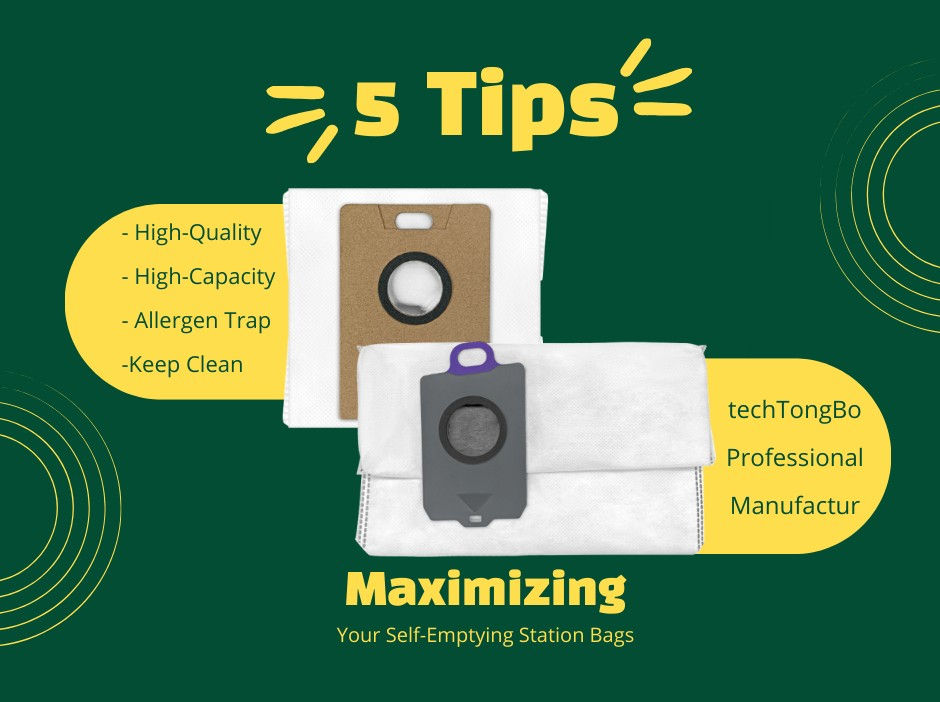Introduction to Non-woven Dust Bag
- ryder814
- Nov 22, 2023
- 3 min read

In modern society, the dust bag is not only a part of vacuum cleaners but also an investment in cleanliness and hygiene. It creates a more habitable environment for us, and its performance directly affects the efficient operation of vacuum cleaners and the improvement of air quality.
This article aims to delve into one of the vacuum cleaner accessories, non-woven dust bags. we will explore the impact of different materials, designs, and manufacturing processes on the performance of dust bags. It also highlights the advantages of non-woven dust bags.
Non-woven Materials
Polypropylene and polyester fibers are the preferred materials for manufacturing vacuum cleaner dust bags, each presenting unique advantages.
Polypropylene stands out for its excellent strength and abrasion resistance. The strength of this material allows it to withstand the pressure of stretching and tearing during the use of the dust bag, ensuring the stability of the dust bag's structure.
Its abrasion resistance makes polypropylene fibers an ideal choice for manufacturing disposable dust bags, suitable for scenarios that require regular replacement to maintain efficient filtration.

In contrast, polyester fibers excel in tensile strength and high-temperature resistance. This makes polyester fibers an ideal material for washable and reusable dust bags, as their tensile strength maintains the stability of the dust bag structure during long-term use. Besides, high-temperature resistance ensures the dust bag does not fail during the cleaning process.
Therefore, the choice between polypropylene and polyester fibers is not a simple substitution but depends on the requirements of the dust bag in a specific application.
Surface Treatment Technologies
To further enhance the filtering efficiency of non-woven fabric, various advanced surface treatment technologies are widely employed. These technologies go beyond improving the physical properties of the material and focus on optimizing its ability to capture tiny particles.
Electrostatic charging technology
Electrostatic charging technology is a widely adopted method. By introducing static charges on the fiber surface, it significantly enhances non-woven fabric's ability to capture tiny particles.
This technology allows the fibers to more effectively adsorb and retain particles in the air, thereby improving the efficiency of the dust bag in the filtration process.
Antibacterial and waterproof treatment
Another surface treatment technology is antibacterial and waterproof treatment. During long-term use, dust bags are prone to invasion by bacteria and mold. Therefore, antibacterial treatment helps prevent bacterial reproduction, maintaining the hygiene performance of the dust bag.
At the same time, waterproof treatment ensures that the dust bag does not absorb moisture during the cleaning process, avoiding mold and odor generation and extending the dust bag's lifespan.

Advantages of Non-woven Dust Bags
In the field of filtration, non-woven dust bags demonstrate a series of significant advantages, making them an ideal choice for vacuum cleaners and filtration systems.
1. Improved Filtration Efficiency
Non-woven dust bags have high permeability, allowing air to easily pass through the filter medium. Compared to traditional fabrics, this high permeability enhances filtration efficiency, effectively capturing and retaining tiny particles, ensuring that the vacuum cleaner can operate efficiently while cleaning the air.
2. No Yarn Slippage
Compared to fabrics, non-woven dust bags avoid the problem of yarn slippage, maintaining structural stability. This feature ensures that the filter medium is not easily deformed during use, preserving the shape of the dust bag, making it more durable and reliable.
3. Excellent Sealing Properties
Non-woven dust bags exhibit excellent sealing properties, effectively preventing particles from passing through the edges or seams, minimizing the likelihood of leaks. This helps ensure that the vacuum cleaner maintains strong suction, enhancing the performance of the entire system.
4. Durability
During the filtration process, non-woven fabric contributes to the formation of uniform and easily dischargeable filter residues. This enhancement not only improves the efficiency of the filtration system but also extends the lifespan of the dust bag.
As a result, the frequency of replacements is reduced, providing users with a more economical and sustainable filtration solution.
Conclusion
Through an in-depth exploration of the materials, design, and manufacturing processes of non-woven dust bags, we have identified their unique advantages in vacuum cleaners and filtration systems.
Non-woven fabric, characterized by its high permeability, structural stability, excellent sealing properties, and durability, emerges as the ideal choice in the field of filtration.
In essence, non-woven dust bags play a pivotal role in enhancing the efficiency and lifespan of vacuum cleaners, contributing to an overall sense of well-being in living spaces. Whether in disposable or reusable scenarios, the multifunctionality of non-woven materials ensures optimal performance across various contexts. "I am Ryder, and I'm here to offer you free guidance if you encounter any issues on non-woven dust bag. Just click here, and I'll get back to you as soon as possible."---Ryder😊
Further Reading
techTongBo (also named: Nanjing TongBo / NJTB) is a Chinese company specializing in the manufacture and sales of vacuum cleaner accessories. We offer replacement accessories for the global market that are compatible with mainstream vacuum cleaner brands and have stronger price advantages.




Comments